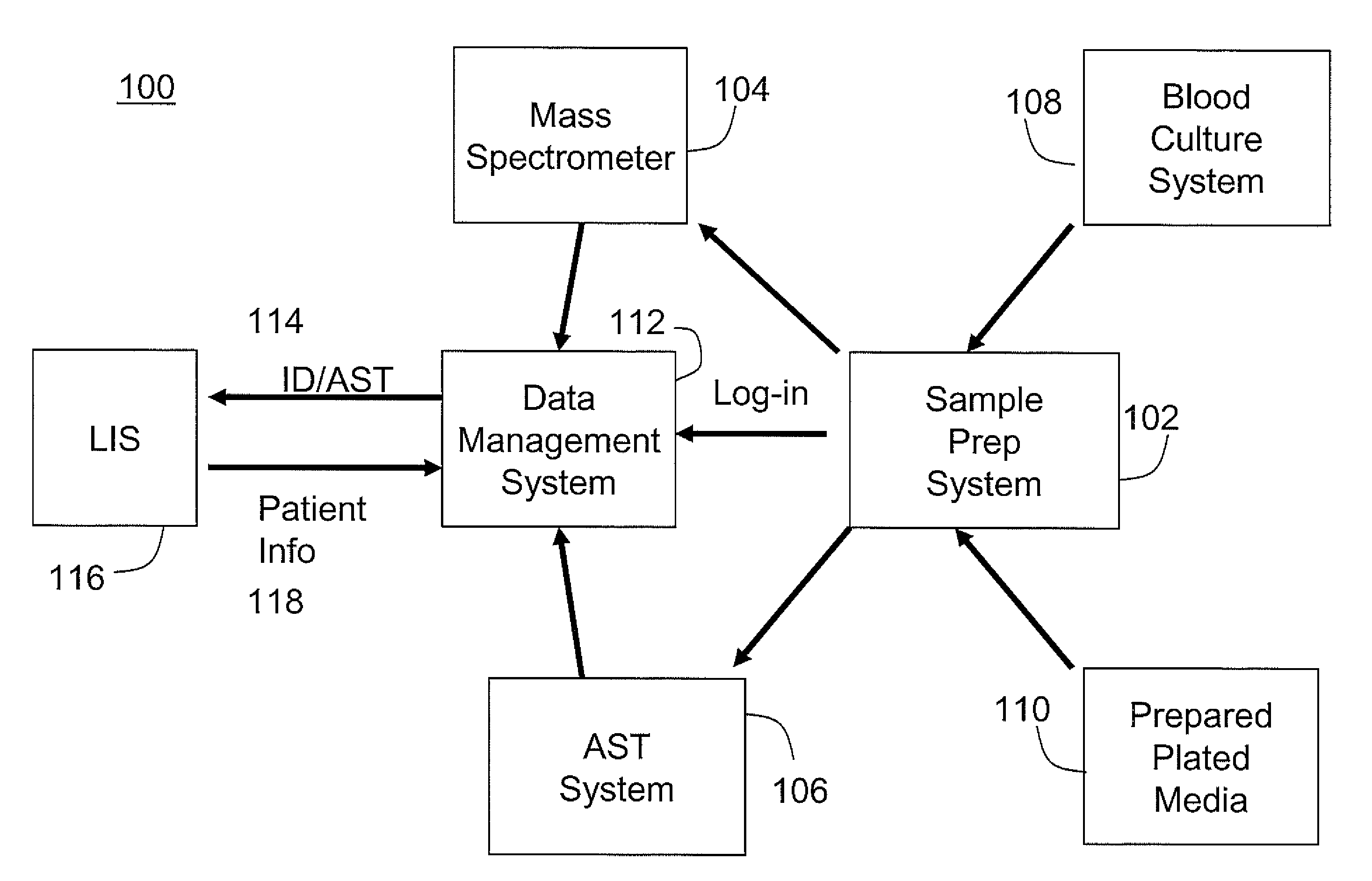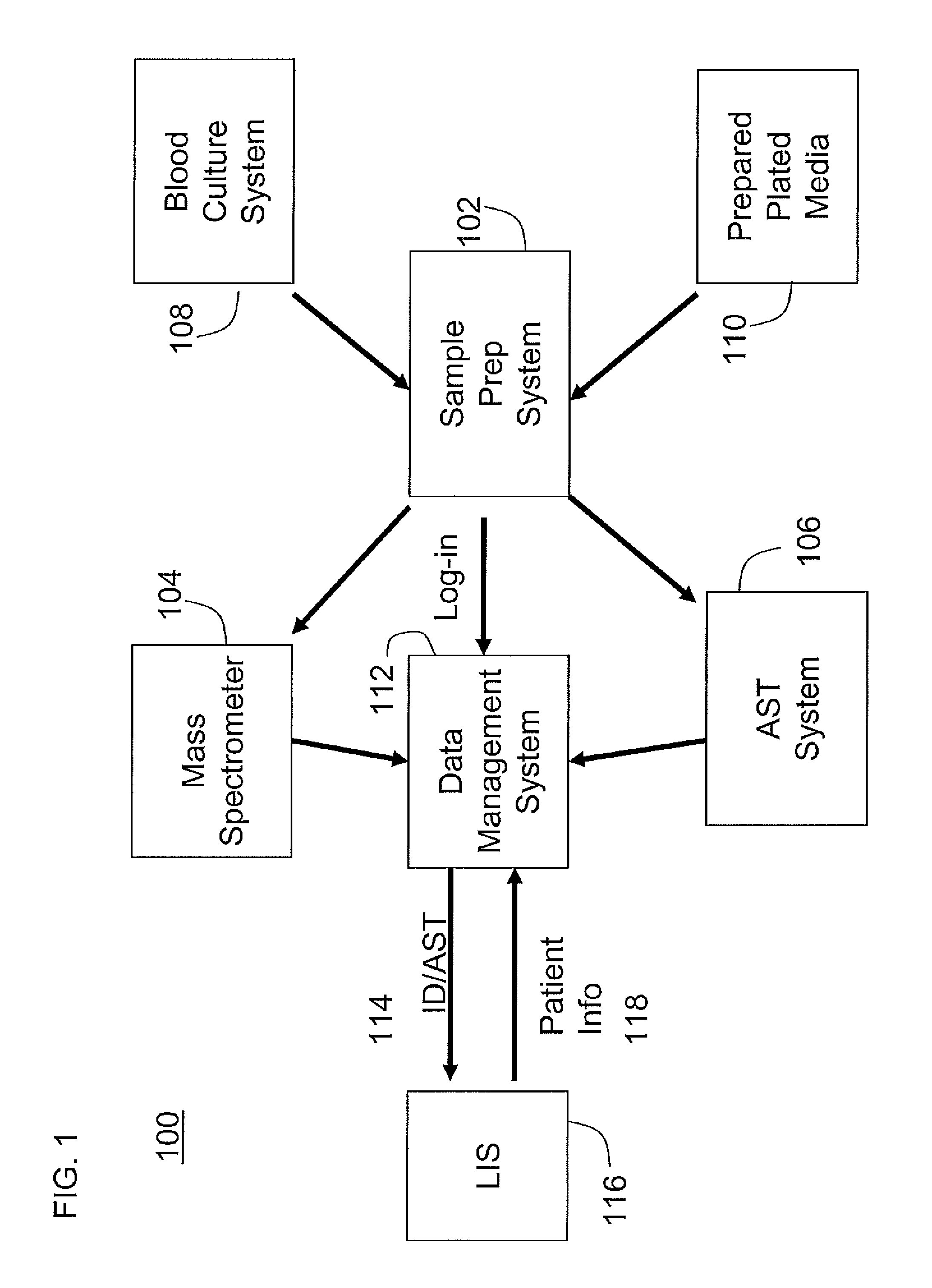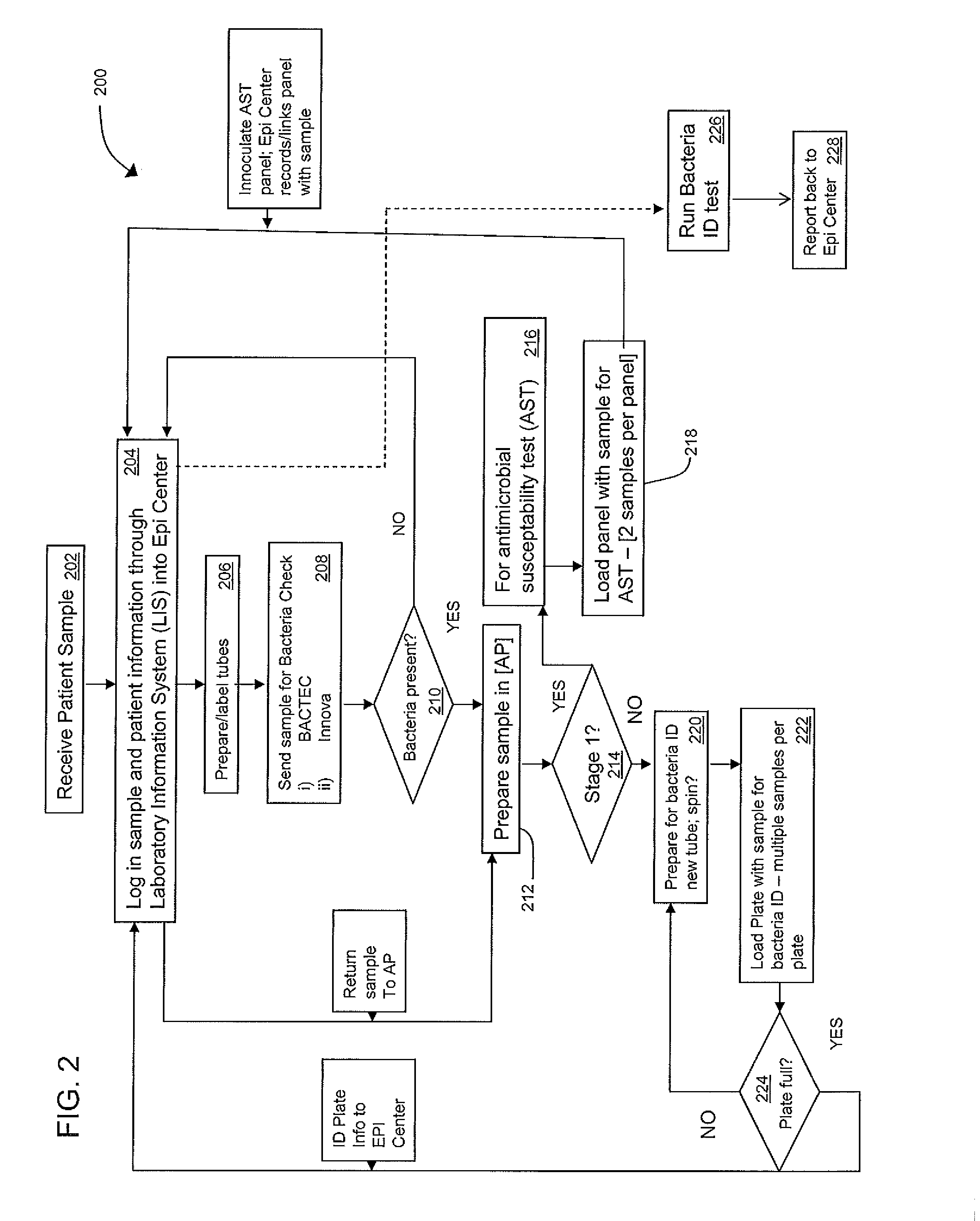Method and apparatus for identification of bacteria
a technology for identifying methods and bacteria, applied in the field of methods and apparatus for identifying bacteria, can solve the problems of laborious obtaining, organizing and communicating information from the various laboratory apparatuses, and difficult routine identification and ast testing
- Summary
- Abstract
- Description
- Claims
- Application Information
AI Technical Summary
Benefits of technology
Problems solved by technology
Method used
Image
Examples
first embodiment
[0022]FIG. 2 illustrates a flow chart for the workflow process 200 of a first embodiment, and is described with reference to the exemplary system components illustrated in FIG. 1. Process 200 begins with receiving a patient sample at step 202. At step 204, a user enters sample and patient information through the LIS 116 into EpiCenter 112. Blood culture vials and / or prepared plates are prepared for testing at step 206, and then in step 208 these are sent to the BACTEC 108 for blood testing, and / or for automated (e.g., Innova 110) or manual lab for plate preparation. If no bacteria are detected in step 208, then that outcome is reported into the data management system, and no further processing occurs for those samples.
[0023]However, if bacteria are detected in step 208, then step 210 directs the sample to step 212 for preparation of a test tube sample in the Sample prep station 102. The sample prep station 102 then accesses information about the sample in step 214 to determine if th...
third embodiment
[0049]a workflow for system 100, and modifications to the components of system 100 in order to support this workflow, is now described.
[0050]In this aspect of the invention, the rack in the Sample prep station 102 holds a Maldi plate. The user places a high concentration, low volume tube in the rack. The Sample prep station 102 may also have the ability to accurately dispense concentrated samples onto a Maldi plate. The Sample prep station 102 may also have the ability to dispense a small amount of emulsion on top of each Maldi plate sample.
[0051]In this aspect of the invention, as with an earlier aspect of the invention, a workflow to use system 100 begins with the receipt of an order, the order being either received by LIS 116 or entered directly into the data management system 112 for an ID test on the Maldi instrument 104 and an AST test using the Sample prep station 102 and the AST system 106. Accession barcode labels may be printed out at the data management system 112 and app...
PUM
| Property | Measurement | Unit |
|---|---|---|
| volume | aaaaa | aaaaa |
| mass spectrometry | aaaaa | aaaaa |
| concentration | aaaaa | aaaaa |
Abstract
Description
Claims
Application Information
 Login to View More
Login to View More - R&D
- Intellectual Property
- Life Sciences
- Materials
- Tech Scout
- Unparalleled Data Quality
- Higher Quality Content
- 60% Fewer Hallucinations
Browse by: Latest US Patents, China's latest patents, Technical Efficacy Thesaurus, Application Domain, Technology Topic, Popular Technical Reports.
© 2025 PatSnap. All rights reserved.Legal|Privacy policy|Modern Slavery Act Transparency Statement|Sitemap|About US| Contact US: help@patsnap.com



